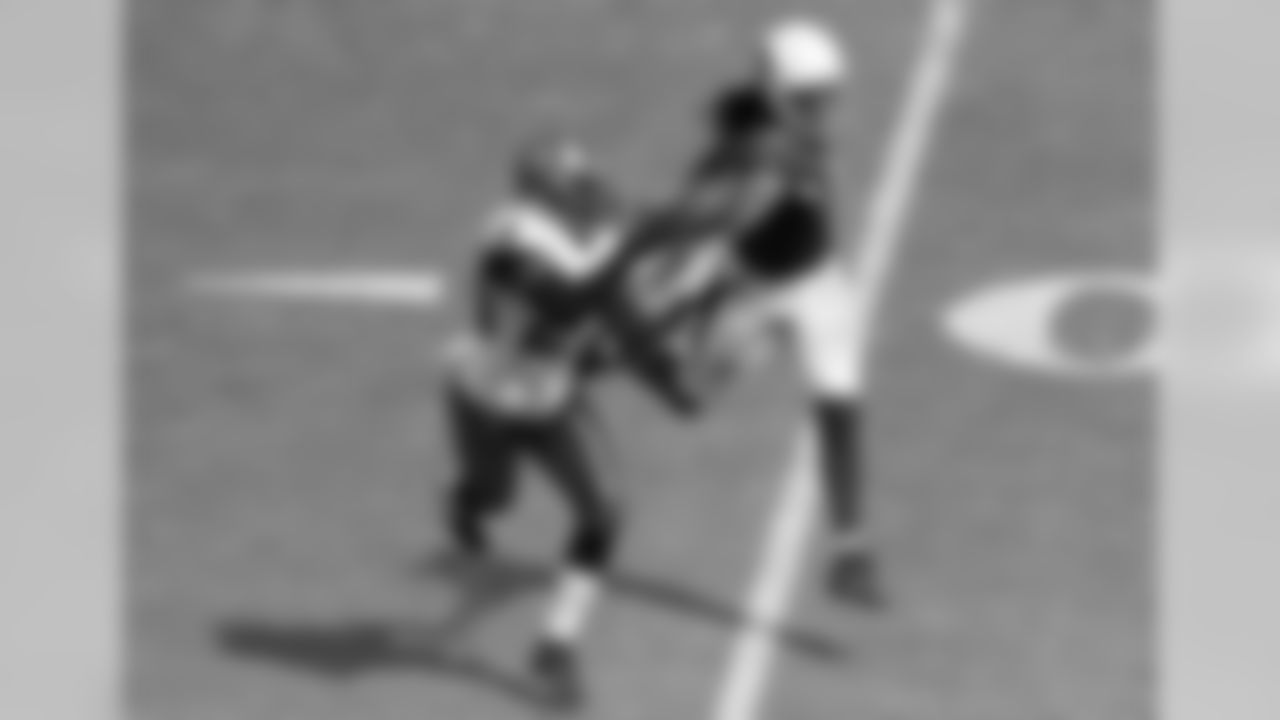If the Bucs traded the #1 pick in this year's draft, it would surely be one of the most dramatic swaps in team history, but where would it rank among the trades that have had the most impact on the team?

General Manager Rich McKay somehow managed to swing a trade with Cleveland, sending TE Harold Bishop to the Browns for a second-round pick. Yes, the Bucs drafted Bishop in the third round, saw him have a blank of a debut campaign and then got a second-round pick for him the following year.

At the time, the team was rumored to be interested in Purdue's Mike Alstott as a potential first-rounder, and that proved half-right. The Bucs' didn't want to use a first-round pick on a fullback, but their ace in the hole was that Bishop-generated selection high in the second round. At pick #35, Tampa Bay did indeed select Alstott, and he went on to have one of the best careers in franchise history.

Buccaneers trade a 2013 first-round pick and a 2013 fourth-round pick (that could become a third-round pick) to the New York Jets for CB Darrelle Revis.

One of the most persistent debates of the 2013 offseason was whether the Jets really would trade Revis. The Buccaneers, believing they had showed promise in 2012 and hoping to break a playoff drought in 2013, made the bold move, sending that first-round pick to the Jets and signing Revis to a lucrative new deal.

Buccaneers trade WR Keyshawn Johnson to the Dallas Cowboys for WR Joey Galloway. From 2005-07, Galloway became the first Buccaneer to record three consecutive 1,000-yard receiving seasons, putting up 22 touchdowns in that span and averaging 16.6 yards per grab. On the Bucs' all-time receiving yardage list, Galloway ranks just ahead of Johnson, at #4, with 84 more yards.

Getting new scenery were two receivers who had been high-profile names in the NFL since the 1990s and, coincidentally, two players who had once been traded by their original teams for a pair of first-round picks. That's how the Bucs got Keyshawn Johnson in 2000, producing a marriage that was sometimes uneasy but did include matching championship rings in 2002.

Buccaneers trade 1977 seventh-round pick to the New York Jets for LB Richard Wood.

The best draft-pick-for-player trade the Buccaneers made during their wheeling-and-dealing 1976-78 days, the best was one made on the eve of the '76 season. On the first day of September, the Buccaneers sent a seventh-round pick in the '77 draft to the Jets to get linebacker Richard Wood, an All-American on McKay's USC teams. Wood was drafted by the Jets in the third round but had an unremarkable rookie season in New York.

Buccaneers trade QB Steve Young to San Francisco for cash, a 1987 second-round pick and a 1987 fourth-round pick.

The Bucs didn't do badly in the deal, as the second-round pick netted them a very good linebacker in Winston Moss and the fourth-rounder brought back productive receiver Bruce Hill. What makes this one of the team's most significant swaps, however, is that it marks the only time the franchise has ever traded away a future Hall-of-Famer.

Buccaneers trade two 2000 first-round picks to the New York Jets for WR Keyshawn Johnson.

The Jets already had two first-round picks in hand and apparently chose the rebuilding route by agreeing to send their most productive player to the Buccaneers for two more. New York became the first NFL team ever to make four picks in the first round of a draft. Tampa Bay, meanwhile, felt like it had found the final piece of the puzzle.

Buccaneers trade a 1983 first-round pick to Chicago for a 1982 second-round pick used to select DE Booker Reese.

Tampa Bay traded its 1984 first-round pick to get a quarterback a few months later, sending it to Cincinnati for Jack Thompson.

Buccaneers trade a 1978 first-round pick (#1 overall) to Houston for 1978 first-round pick (#17), 1978 second-round pick, 1979 third-round pick, 1979 fifth-round pick and TE Jimmie Giles.

The Bucs wanted Grambling quarterback Doug Williams and obviously were correct in believing they could move down that far and still get him. Williams may be the closest thing the Buccaneers have ever found to a franchise quarterback, and though his Buccaneer career ended in dispute with previous ownership he did lead the team to its first three playoff appearances.

Coming into the day with the seventh-pick in the round, Tampa Bay agreed to trade down five spots with the Eagles, who had their eyes on Combine workout warrior Mike Mamula. The Buccaneers favored another defensive lineman, Warren Sapp, and thought they could still get him at #12. They were right, and that allowed them to turn pick #72 into picks #43 and #63.

As the first round neared a close, another player of whom the Bucs were enamored was still available. So, armed with three second-rounders, Tampa Bay sent their own (#41) plus the second of the two they got from Philly (#63) to Dallas for #28. There they selected linebacker Derrick Brooks.

Buccaneers trade 2002 first-round pick, 2002 second-round pick, 2003 first-round pick and 2004 second-round pick to Oakland for the rights to Head Coach Jon Gruden.

The Buccaneers won their first Super Bowl in Gruden's first year at the helm, and that essentially made whatever price the Bucs had paid worth it. It was an incredibly aggressive move by team ownership, and it worked. Simple as that.
Related Links
Articles
Photos
Videos
If the Tampa Bay Buccaneers do decide to trade out of the first-overall draft slot this year, they should put in a call to the Cleveland Browns. Allow me to explain.
It's not the fact that the Browns have two first-round picks to use in a trade, or that they could possibly be coveting one of the top quarterbacks. Those are useful facts, but this is more about superstition. See, the Browns' first pick is #12 overall, and that just happens to be the Buccaneers' historical sweet spot in the NFL Draft.
The Buccaneers have selected 385 players over the course of 39 NFL Drafts. They've done so from 226 different draft slots, ranging from #1 (most recently in 1987) to #460 (the 1976 draft was really long). At no spot, not even #1, have the Bucs brought more player value into the league than at #12.
Pro Football Reference employs an evaluative method called "Approximate Value," or AV, that yields a numerical number for each season played by an NFL player. Like WAR in baseball, it is a cumulative statistic, as a player's yearly totals continue to add on. Hall of Famer Derrick Brooks is the Bucs' all-time leader in AV, with 190. Three good, solid, long-lasting performers like David Logan, Donald Penn and Richard Wood all gave the Bucs an AV of 51. Mike Evans got seven in his rookie season, which is a nice start.
AV isn't perfect, but it does allow us to compare players across a roster, and throughout a team's history. By combining those numbers with a player's draft status, we can chart how much value has been produced at each spot in the draft through the years. For this particular study, we're looking at a player's total career NFL AV, not just what he did for the Buccaneers. That's of particular importance for men such as Vinny Testaverde and Hugh Green. We're also using PFR's "Weighted Career Approximate Value," or CarAV, which gives a player 100% of his best AV season, 95% of the second-best season, and so on. As such, Brooks' CarAV is 141, still the best ever for a Buccaneer.
Oh, and running back Warrick Dunn, who just happened to be selected 12th overall by Tampa Bay in 1997. Two years earlier, the Bucs had used pick #12 to land future Hall-of-Famer Warren Sapp. In between, coincidentally, the team also executed the 12th overall pick in 1996, bringing in defensive end Regan Upshaw. During their NFL careers, those three men combined to post an CarAV of 248, the most for the franchise at any particular spot in the draft.
Of course, the Buccaneers could also stay put this year and put the #1 slot in great position to overcome #12. The Bucs have made the first pick in the draft on four previous occasions, and while those picks have ranged – from the Bucs' perspective – from sublime (Lee Roy Selmon) to disastrous (Bo Jackson), those four picks have a combined 216 CarAV.
It obviously helps when the Buccaneers end up with multiple picks at the same spot through the years. The #84 pick hasn't produced any big stars for the team, but solid producers such as Dwight Smith, Mason Foster and Jamie Duncan have given it a total of 86 CarAV, the 13th best draft spot for the franchise, historically. The highest-ranked draft slot with just one player on its list is #82; that's where the Buccaneers grabbed safety John Lynch in 1993.
Here are the top 10 CarAV-producing draft spots for the Bucs through the years:
|
Pick # |
Players |
Total CarAV |
|
12 |
Warren Sapp, Warrick Dunn, Regan Upshaw |
248 |
|
1 |
Vinny Testaverde, Lee Roy Selmon, Ricky Bell, Bo Jackson |
216 |
|
28 |
Derrick Brooks, Jackie Walker |
146 |
|
66 |
Ronde Barber, Lawrence Dawsey |
137 |
|
17 |
Doug Williams, Sean Farrell, Josh Freeman |
135 |
|
34 |
James Wilder, Errict Rhett, Jacquez Green, Gordon Jones, Demetrius DuBose |
131 |
|
6 |
Trent Dilfer, Broderick Thomas, Eric Curry |
112 |
|
7 |
Hugh Green, Charles McRae, Mark Barron, Mike Evans |
97 |
|
83 |
Jeremy Zuttah, John Cannon, Robert Goff, Craig Swoope |
97 |
|
4 |
Paul Gruber, Keith McCants, Gaines Adams |
97 |
The #83 pick is the most interesting entry on that list. The Bucs have hit that spot four different times, a rare occurrence after Round One, and generally gotten useful players out of it. Craig Swoope didn't have a memorable Buc career but Jeremy Zuttah, John Cannon and Robert Goff all topped 24 in CarAV.
That #82 spot has actually been the Bucs' most efficient pick, since John Lynch is a one-man group there and he produced 88.0 CarAV. That just beats out the #12 spot, with 82.7 per player. Ronde Barber and Lawrence Dawsey carry #66 all the way to fourth on the CarAV-per-player list, with 68.5.
When these results are plotted in order of draft pick you get, you obviously get a gradual descent, but it's not nearly as smooth as you might think. There are quite a few significant peaks and valleys, producing a rather jagged chart. That's largely because there are many draft spots at which the Bucs have never picked – beginning at #2 overall – and those all get a CarAV of zero, of course. But there are also little interesting pockets of success for the team along the way, such as picks 80-84, which have produced a combined CarAV of 318 thanks to the likes of Lynch, Zuttah, Smith, Cannon and Martin Gramatica. Another such stretch comes from picks 145-147, with a combined CarAV of 95 led by Chidi Ahanotu and Rhett Hall.
The lowest draft spot to produce even 25 CarAV for the Bucs is #307, thanks almost completely to defensive tackle David Logan. The lowest spot to produce any CarAV is #377, courtesy of wide receiver Carl Roaches and his score of two.
No, the Buccaneers aren't really going to consider these numbers when choosing what to do with the first overall pick this year. But if a trade with the Browns did materialize, at least they could draw some comfort in knowing how well the 12th spot has worked out for them in the past. And if nothing else, these numbers illustrate once again that there is potential value at every place in the draft, as well as the potential to miss.



























